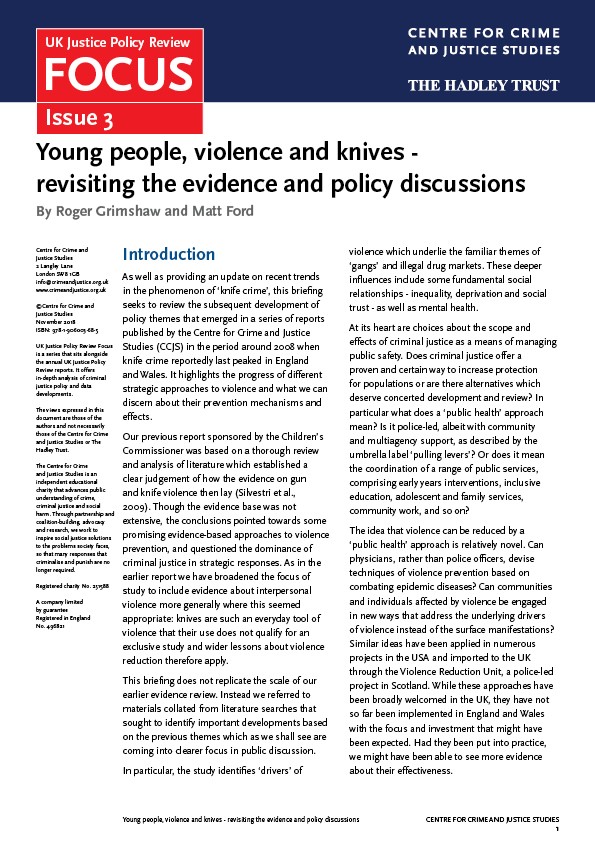In this briefing, Roger Grimshaw and Matt Ford examine recent trends in knife-related violence and assess different approaches to tackling, and reducing it.
It builds on an earlier review of evidence of effective strategies for addressing gun and knife crime, published by the Centre for Crime and Justice Studies in 2009.
The briefing covers four main areas. First, it examines trends in knife-related violence across England and Wales. It concludes that real levels of knife crime are likely to have risen in recent year, but that recording changes have also been a factor in the increase.
Second, it looks at the drivers of knife violence, covering a range of factors, including demographic changes, poverty and inequality, mental health, drugs and gang issues. It concludes that 'interventions which do not seek to address wider social issues such as inequality, deprivation, poor mental health and drug addiction are unlikely to provide long-lasting solutions to knife violence'.
Third, the briefing assesses the effectiveness of criminal justice interventions – including police stop and search and tougher sentences – in controlling and reducing knife violence. It finds no real evidence that such approaches are 'either just or effective', and concludes that such approaches 'appear to be both damaging and disproportionate'.
Finally, the briefing assesses so-called 'public health' approaches, which treat violence like a contagion, requiring mapping, analysis, and the planning of interventions. Such approaches are 'better evidenced and apparently more effective than purely suppressive, criminal justice approaches'.
In conclusion, the briefing argues that public health approaches, while promising, have so far failed to fulfil their potential. When faced with an apparently urgent problem, politicians find it difficult to resist the 'siren call of criminal justice', inspired, as it is, by 'emotive assumptions about combating "threats", reducing "risk", and preventing incidents "spiralling out of control"'.
What is needed is greater clarity about what public health approaches mean, what evidence supports them, and how they might best be implemented.
